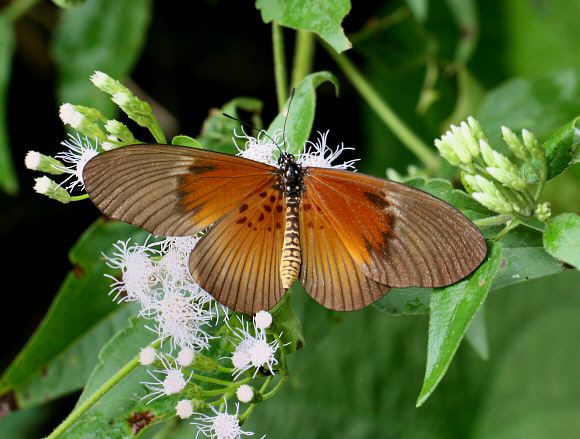
Introduction
There are 228 Acraea species, of which 223 are Afrotropical in distribution. The majority are found in the forests and savannahs of East Africa, while about 60 are found in West Africa. Beyond Africa a further 5 species occur in the Oriental region, and another is found in Australia / New Guinea. In the neotropical region there are 50 additional species, but these are normally placed in the genera Actinote, Altinote and Abananote due to differences in venation and genitalia.
All Acraea species have elongate forewings and rounded hindwings. The wings are thinly scaled and in many species are semi-transparent. The scales wear off very easily so that insects more than 4 or 5 days old have a glassy or greasy appearance. The majority of species have a predominantly brownish or greyish ground colour, marked with bands or patches of red or orange. The basal area of the underside hindwings of most species is marked with a pattern of small black spots. In many, including umbra, these spots also appear on the upper surface of the wings.
Acraea umbra is a large butterfly, and in common with most of the other large Acraea species was formerly placed in the genus Bematistes, hence the vernacular name. It is distributed from Sierra Leone to Uganda.
Habitats
This species is a forest butterfly, but is quite tolerant of habitat degradation. Thus it can be seen flying deep in the forest, and also along roadsides in forested countryside.
Lifecycle
The larval foodplant is thought to be Adenia ( Passifloraceae ).
Adult behaviour
The butterfly is usually seen singly. Like other Acraea species it is particularly fond of nectaring at Eupatorium odorata.
